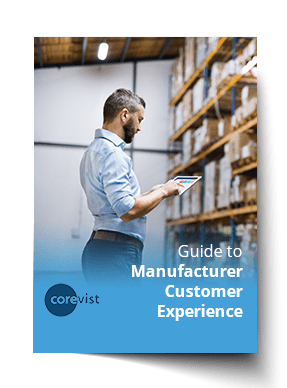Share
Author
George Anderson
Share
B2B eCommerce isn’t what it used to be. It’s no longer enough to have a catalog without ordering capabilities — or the ability to place orders with no guarantee that the ERP will accept them. Whatever personalization your buyers can get by calling customer service, they need that same personalization in B2B eCommerce.
As consumers, your customers are wooed by personalization everywhere they turn online. If you’re going to compete in this environment, you’ll need to offer the right B2B eCommerce personalization, at the right time, to every user.
So what does it take to create a competitive B2B eCommerce program in the age of rising consumer expectations?
Here are five high-level keys to success.
1. A B2B eCommerce platform that offers the right personalized experience to each user
It seems fairly obvious, but it’s worth stating. Your buyers need deep personalization in your B2B eCommerce experience.
But what does that mean?
Personalization in B2B eCommerce looks a little different than it does in B2C. In a nutshell, your buyers need B2B experiences that reflect the personalized data and logic governing your transactions.
- Personalized catalogs and picklists
- Personalized product recommendations
- Personalized pricing
- Real-time inventory availability with personalization rules in play (if any)
- Real-time credit status
In other words, your B2B eCommerce experience should honor all the relevant data and logic that you’ve defined in SAP ERP — for every customer and every product. If you’ve already invested in defining this personalization in the ERP, then you need a way to enforce that data and logic accurately for every logged-in user.
Hint: The key is built-in SAP integration, like what the Corevist Platform provides.
2. A painless, efficient way to roll out additional B2B eCommerce experiences
While the consumerization of B2B eCommerce is a near-universal phenomenon, you can’t take a one-size-fits-all approach to every customer segment.
One user experience may not fit every brand, geography or market. Specific customer segments may have unique expectations — and don’t forget about linguistic and cultural differences.
Clearly, you need to tailor your B2B eCommerce experiences to the people you’re reaching.
Yet competitive pressures don’t give you the time or resources to create bespoke architectures and experiences in every scenario. You need a way to launch additional B2B experiences that offer the right level of control and customization — but don’t require duplicate investment in integration architecture.
To do this well, you’ll want to find a B2B eCommerce solution that allows you to create spinoff sites from your flagship site. Ideally, you’ll want a solution that includes SAP ERP integration that you can reuse in the spinoff sites with minimal modification.
Hint: This is what the Corevist Platform offers.
3. Tools and processes to analyze your B2B eCommerce customer experience
As B2B eCommerce experiences become more consumerized, organizations gain an opportunity to analyze their customer experience like never before. Basic data, like bestselling products in B2B eCommerce or conversion rates by region, can inform strategic planning and go-to-market strategies.
But transactional data isn’t the only thing you should track.
What do customers do in your B2B eCommerce experience? Do they take the paths you expect? Where do they encounter friction?
Along with a session-based analytics platform like Google Analytics, you’ll want to track your real customer experiences with a tool like Fullstory’s digital experience intelligence platform. This solution allows you to replay actual user sessions, identify patterns in user experience (both good and bad) and act on these insights. (Hint: the Corevist Platform integrates with Fullstory.)
Of course, it’s not enough to have all this data. You also need a rhythm for monitoring it — and a process for acting on any takeaways you discover.
4. A partner managing and supporting your B2B eCommerce solution
With the rise of consumerization in B2B eCommerce, we’re seeing another trend, too. The technology supporting consumer-style B2B eCommerce is becoming commoditized — which means there’s less value (and more cost) to be gained by owning it in-house.
This is true not only of the front-end technology, but also of SAP integration. Many organizations find that their SAP integration requirements are too complex to maintain with an integration platform sitting between B2B eCommerce and SAP. Here, too, you’ll want to find a partner who can own your SAP integration from top to bottom — who has not only B2B eCommerce expertise, but also SAP expertise.
5. Expert insight into your B2B eCommerce journey in the age of consumerization
As digital trends continue to evolve, what worked today may not work tomorrow. This is true in B2B eCommerce as in all areas of business.
How are you going to stay abreast of these trends in B2B eCommerce? And how will you define your strategy accordingly?
Unless you already have deep B2B eCommerce expertise on staff, you may want to look for a partner who can provide guidance. You want a partner who can translate broader trends in B2B eCommerce experience to the specific needs of your market and your users. Ideally, you should look for a collaborative relationship here.
Bonus points if your trusted advisors are also the ones providing and managing your B2B eCommerce solution. In this scenario, you’ve got one partner to call for any questions or problems, whether large or small.
NEW Resource:
Ultimate Guide to Manufacturer Customer Experience
Use this in-depth resource to create a competitive customer experience in the digital age.










